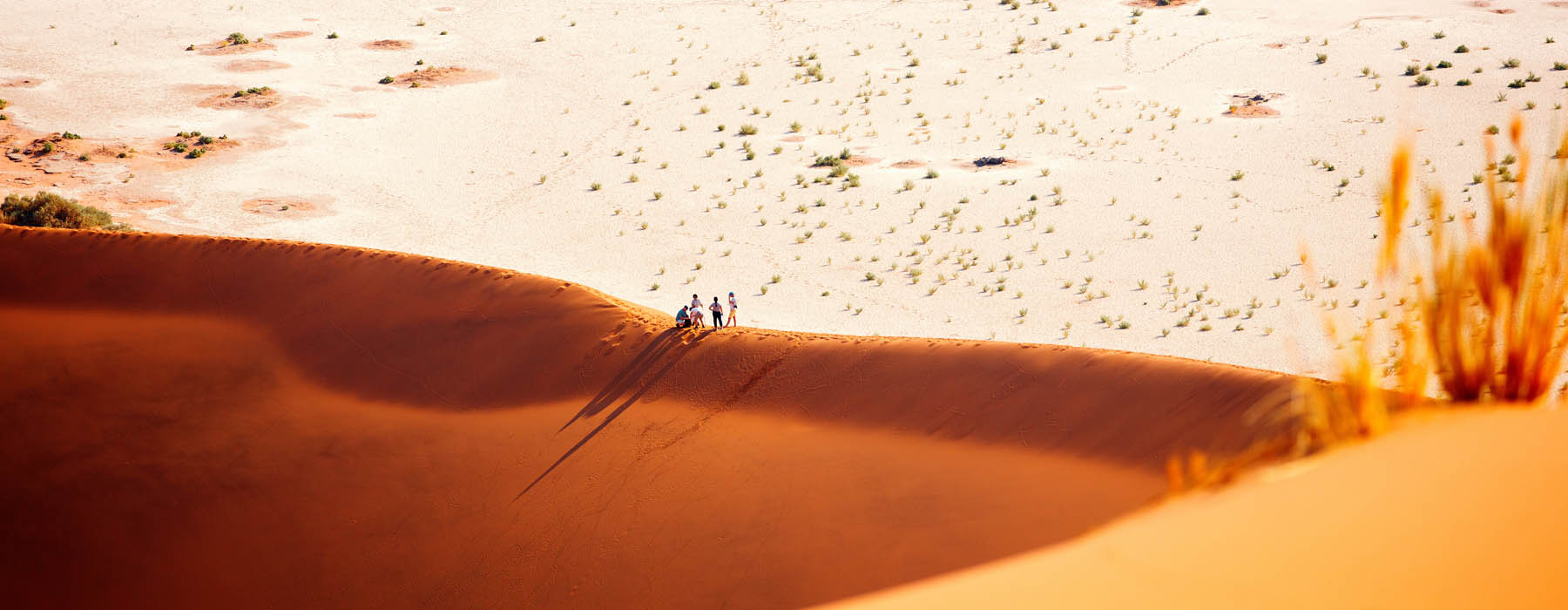Namibia is on the west coast of Africa (Atlantic coast) and sits between Angola to the north and South Africa to the south. Its location in the southern hemisphere means the seasons are opposite to the ones we have in the UK. Namibia's climate can generally be divided into three main seasons. The first part of summer is from October to December, with a hot and dry season. Then, from January to April, comes the second part of the summer, a warm and wet season, also known as the 'rainy season'. Lastly, Namibia's final main weather period runs from May to September. This is winter, with colder temperatures and a dry climate. From over 40°C in summer down to zero in winter, temperatures in Namibia can vary greatly. Several regions of the country have slightly different climates depending on where they are. Here's an overview of Namibia's major destinations, their climate throughout the year and when we would recommend as the best time to visit Namibia.
The Atlantic coast
Namibia has around 900 miles of coastline. The Benguela Current and the Atlantic chill affect the coastal climate. The average ocean temperature is cool (14-18°C) because of this Antarctic current. The coastal region is an arid area which, in summer, enjoys temperatures ranging from 15°C to 25°C. During the rainy season, the coast does receive less rainfall compared to inland areas (two inches of rainfall, compared to over 12 or even 27 inches in some areas).
Damaraland
Damaraland is a very arid region. The rains only come from December to March, and temperatures can reach 35°C. From April, and more so into May, the days are less hot. Damaraland is a popular hiking area and these months, as well as July and August, offer a favourable climate. From October and November, the heat increases, and the days are longer.
Etosha
The coldest and driest months run from May to September in the Etosha region and its national park. The rainy season from November to March, with the wettest but also the hottest months, has average daily temperatures of 31°C, and the average minimum is 14°C. There is generally very low humidity across most of Namibia, but it can reach as high as 80% in the far north and Etosha National Park during the summer.
Namibia's far south
The far south of Namibia is in a semi-arid area. Temperatures can exceed 40°C, as in the far north of the country. The southern highlands, trapped between the Namib and Kalahari Deserts, have low rainfall, close to ten inches a year.
The Kalahari Desert
The Kalahari Desert has a semi-arid subtropical climate. The average annual temperature exceeds 18°C. At an altitude of between 2,000ft and 5,000ft, the Kalahari Desert has lower temperatures than other deserts, such as the Sahara or the Sahel. Mid-summer temperatures (December to March) are not too hot, with monthly averages below 28°C. Unfortunately, the hot season is also the rainy season. Be aware than there can be frosts during the winter months (June to August).
The Waterberg
The Waterberg region, like other parts of Namibia and neighbouring South Africa, has its rainy season in the summer, i.e. between November and February. Rainfall is around 16 inches in the lower altitude part of the north. The minimum average temperature for this period is 14°C and the maximum average is 30°C. Ground frost is common during the winter months, as in the Kalahari Desert region.
The Namib Desert
The Namib Desert and surrounding area, close to the coast, are the driest part of Namibia. The same day can feature extreme temperatures of over 40°C in the middle of the day and very cold nights dropping to below zero.
Kaokoland
Kaokoland is the northern end of the Namib desert (north-western Namibia). This wilderness is influenced by the harsh desert climate. Warm and dry generally throughout the year, temperatures in Kaokoland can become very cold at night from June to August (winter months).



